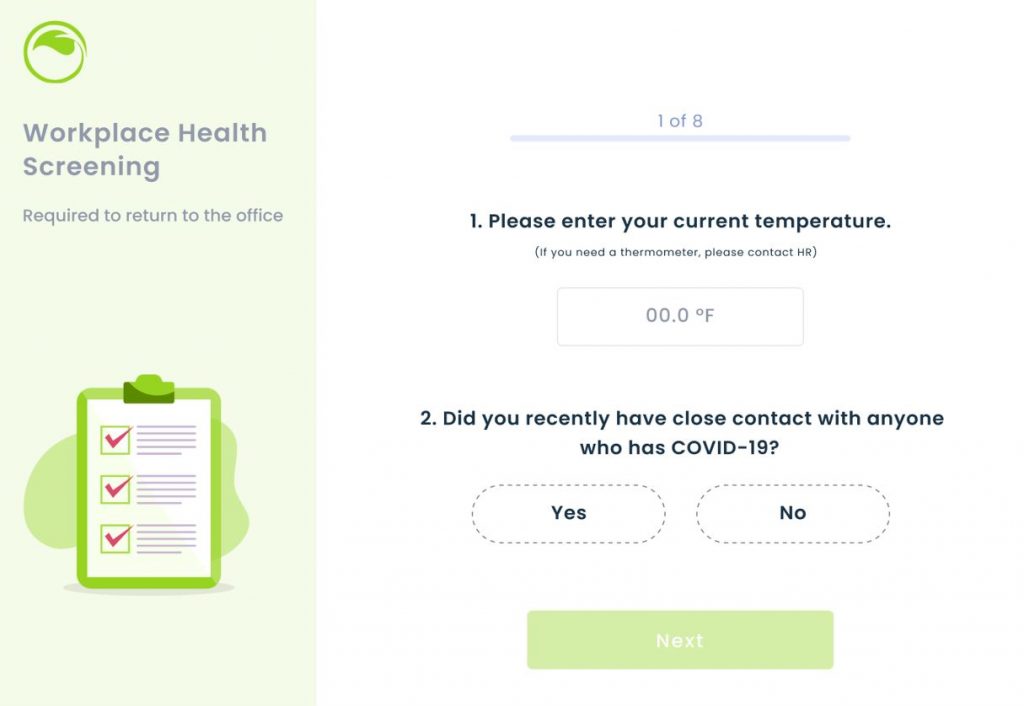7 Questions Employers Should Ask About Reopening (Video)
The Coronavirus Pandemic has severely impacted businesses over the past year. It has also reshaped society and disrupted daily life for people around the world. Employers must keep up to date with national, state and local guidelines and mandates to remain compliant as policies and laws are constantly changing. Here are 7 questions to consider right now as you are considering reopening.
7 Questions Employers Should Ask About Reopening
1. When is the right time for employees to return?
Employers want to know when it may be safe to bring their staff back into the workplace. There are no crystal-clear guidelines, however the World Health Organization suggests that non-essential workers return when there is a significant decrease in community outbreaks, a decreased rate of positive tests, and an increase in testing availability.
Employers should assess their business operations to determine if all the employees should return at once or allow a flexible schedule which allows for partial remote work and partial in-person work. Keep in mind that this all depends upon your local region as well as your industry
2. How will the business modify the workplace?
The “old” concept of the office space may never be the same. With the pandemic, many businesses are struggling to create a new office plan but have extraordinarily little tools for guidance. Employers should start to consider the design and set up of their workplace:
-
Is your workplace set up in a fashion that will allow and encourage employees to practice social distancing?
-
Are the employees working in an open space or does everyone have their own office room with a door?
-
In manufacturing, will the business create stations on an assembly line to ensure workers are a safe distance apart and can continue their jobs?
When considering these questions, employers will need to be mindful of state laws as well as OSHA and the CDC guidelines for maintaining a safe workplace.
3. Can I mandate my employees to wear facemasks or PPE?
Yes, an employer may require its workforce to wear personal protective equipment (PPE), such as face masks and gloves. They may also require employees to observe infection disease prevention practices (washing hands and social distancing). Employers should also provide resources on general wellness practices such as proper handwashing tips and how to properly wear and/or dispose of a mask. As a benefit for employees, it may help to provide hand sanitizers and distribute masks to ensure everyone has equal access to these supplies.
4. How can we best protect employees who come to the office?
The best way to protect your employees is to ensure those who are high risk of transmitting the disease or being infected stay home. Many employers have been screening employees daily for fevers, which was a controversial practice in May. However, in the U.S., the Equal Opportunity Employment Commission (EEOC) has determined that during the pandemic employers may require employee temperature checks or testing without violating the Americans with Disabilities Act.
Temperature checks alone are not enough to reduce the spread of the virus. Since most people do not have a fever when they first get sick with COVID-19, it is essential to use temperature checks along with a symptom assessments/questionnaire for employees re-entering the workplace. For example, asking them if they have been in close contact with anyone diagnosed with COVID-19, or if they are experiencing any new respiratory issues or loss of smell.
Many companies are now using either a paper spreadsheet or webform to ask these assessments upon arrival, which may be burdensome since employees would need to wait in line to complete them. Other companies are using mobile apps which employees can answer the questions at home or on their way to work and show a confirmation upon arrival.
The use of a mobile app can also provide the employer with more detail and analytics around the risk status of their population and to keep track of infected employees. The most crucial individuals to screen are those coming into the workplace, but many companies are now encouraging all employees to complete these assessments even if they are working from home as a pre-caution to keep their families and communities safe.
5. How should we document an infected employee?
Under OSHA’s normal record-keeping requirements, COVID-19 is a recordable illness if an employer determines that it is work-related. It is important for employers to remember that recording a work-related case of COVID-19 does not, in and of itself, mean that the employer violated OSHA standards. If there are any confirmed COVID-19 cases in your workplace, it is imperative to document the infected employees.
Best practices are to keep document the employee’s name, the date of positive test, date and time they may have failed a temperature scan/symptom assessment or showed COVID-19 related symptoms, and a record of other workers who may have come in “close contact” with the infected individual.
The CDC defines a “close contact” as any individual who has been:
(a) within 6 feet of an infected employee;
(b) for at least fifteen (15) minutes;
(c) starting from forty-eight (48) hours before the person began feeling sick until the time the person is isolated – The 6-15-48 Rule.
Each state may have different policies when it comes to reporting, so check if your local guidance to determine if there are specific recording obligations triggered by a positive COVID-19 case.
For example, the Los Angeles County, California Order mandates that employers with knowledge of three or more positive COVID-19 cases among employees within a 2-week period must report the COVID-19 “outbreak” by telephone to the Department of Public Health. We provided more details on how to document a COVID-19 case with additional resources in this earlier blog post.
6. What is the best way to support the physical and mental well-being of our employees?
Your employees’ well-being should be a top priority, more than ever. While many companies currently offered some sort of a wellness program just to check the box that they did, the pandemic made the case that keeping employee morale high while supporting their emotional and physical health is of importance.
With employee stress and anxiety at an all-time high, employers can remind their staff to use their EAP program which provides confidential counseling for a variety of issues.
Another way to support mental well-being is to offer emotional support through some form of a self-directed cognitive behavioral therapy (CBT) program or offer stress management and mindfulness classes.
There are many ways to support physical well-being whether it be to have employees track their steps and participate in contests, complete biometric screenings, offer fitness classes or a combination of the three. Companies who do not prioritize their employees’ wellbeing may witness lower productivity due to WFH burnout and even increased turnover.
7. How should we best communicate with our employees?
This is the most important question on the list because without your employees, your business will have a hard time thriving. Employees want to have open, transparent communication and understand all risks. Your responsibility as an employer is to keep them informed because it shows your employees that you care about their well-being and you are taking every possible measure to keep them safe.
With so much false information being spread faster than the virus, be sure to provide your staff with updates from legitimate sources such as the CDC and OSHA. Clearly communicate new policies regarding workplace screening, vaccinations, cleaning/disinfection procedures, and social distancing policies. If you do currently have employees in the workplace, put up signs around the office. With a largely remote staff, traditional forms of communication may not always be easy. Many employers are now using chatbots to answer frequently asked questions, posting updates on the company’s intranet, as well as communicating via text message or chat tools like Slack. A good practice is to send a survey to find out which communication channels are best for your employees. This will ensure higher success rates in them receiving messages and being able to respond or take action.
COVID-19 is likely to be a reality we must live with for the next several years. As this pandemic progresses, its impact on organizations will be stronger. While there is no clear-cut solution to re-entering the workplace, use the questions outlined above to serve as a guide for how you’ll address the situation. It will not only help to protect your employees and their families, but it will also demonstrate your reputation and integrity as an employer and will allow you to make better decisions as you begin your “return to work” initiatives.






